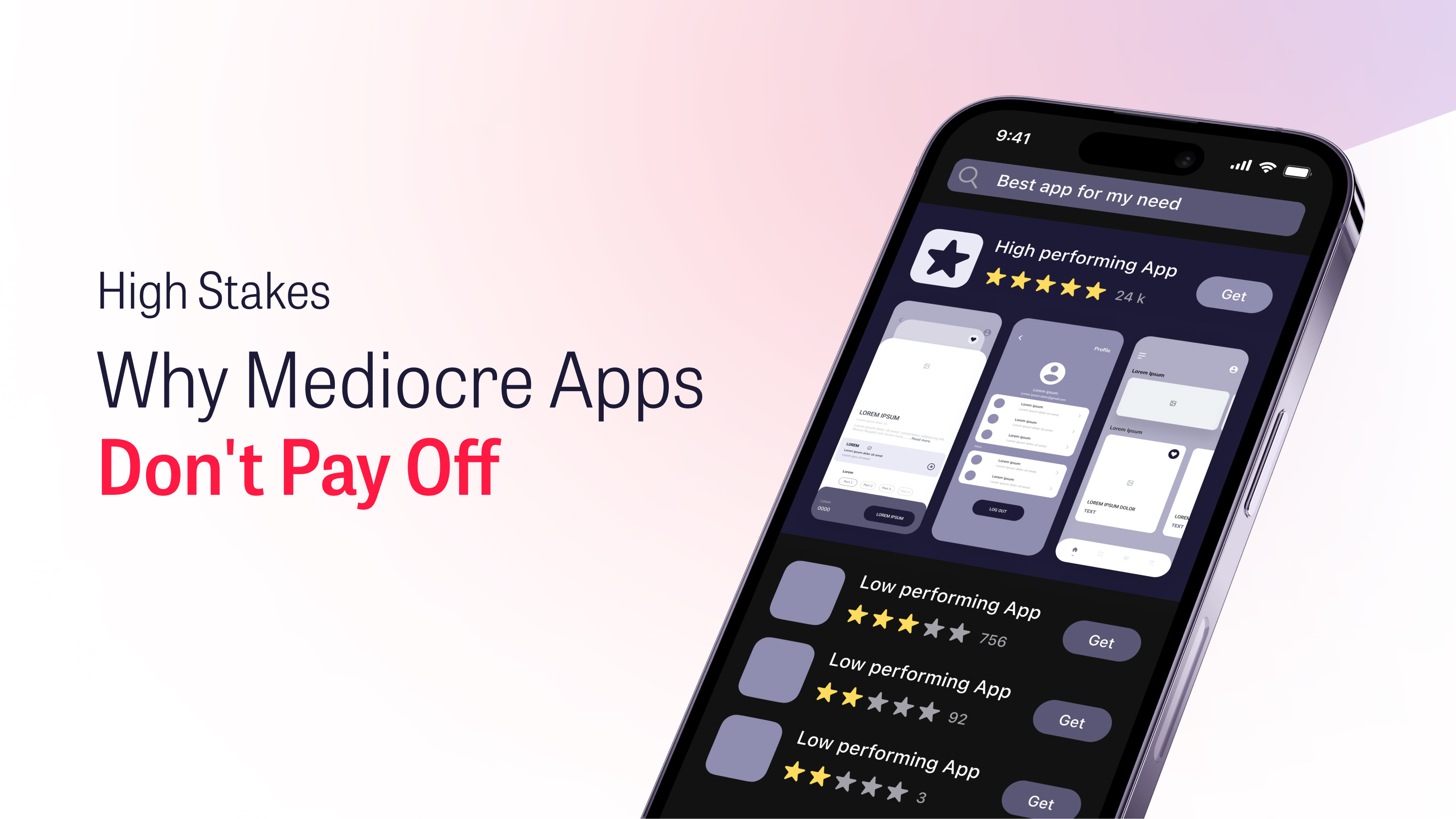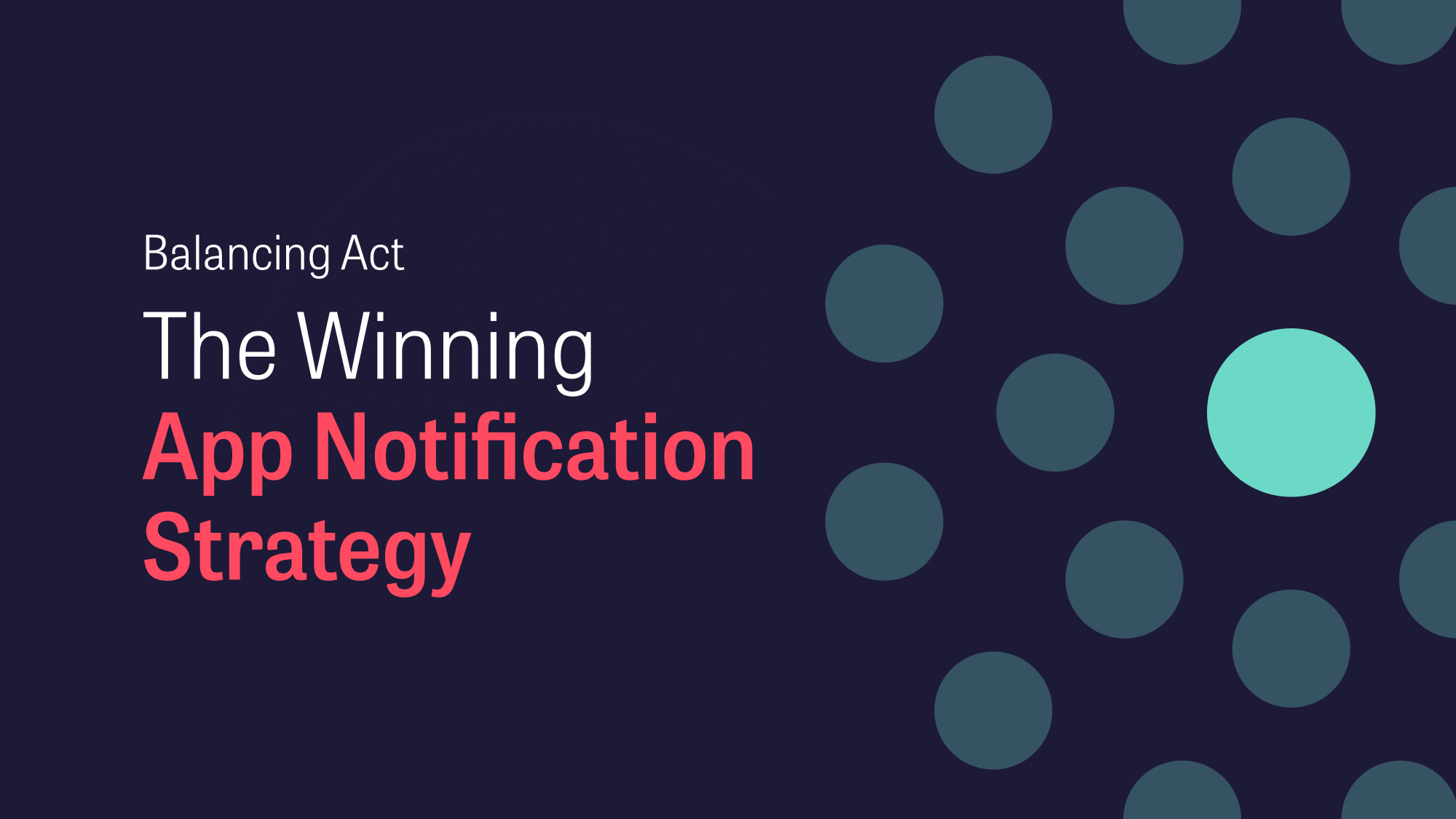
The big dilemma
You may know the feeling and the dilemma: You already have one app in the market, and now a different business unit wants to either get some features in the existing app or they’re “threatening” to go out and buy their own elsewhere. Perhaps you already have a roadmap planned for the next 6-9 months and can’t fit features in any earlier than this, perhaps you are doubting if the features they are requesting, even fits in the current app? That poses a conundrum! On one hand, there is the option of creating a single native app combining all of the company’s offerings into one space. On the other hand, there’s the possibility of building several “single-purpose apps” – each with its own capabilities and distinct user experience. What are the pros and cons of each approach, and how will this affect your business in the long run? There’s no exact science behind answering this question, however, years of experience has taught us that the following themes are worth considering when faced with this dilemma.
User experience
The first factor is user experience and consistency. Most people, who have experience with developing native apps, know that aligning the user experience across the two platforms, iOS and Android, can be a difficult task in itself.
So one of the first questions to ask is:
“What measures do you have in place to ensure that the user experience is consistent across all platforms and app offerings?”
If the answer to this question is, “I haven’t really given this much thought”, then the arrow isn’t currently pointing towards a strategy with several single-purpose apps.
But the topic around user experience doesn’t end here. It’s not only the consistency of the UI that is presented to the users, as user experience consists of more than just the user interface. User experience is equally if not even more driven around the value proposition in the application and the synergy between the different features that make up the app.
What does this mean in practice? If you’re to bundle several features in your single app, you need to make sure that the separate features, and their presence in the given app, make sense in the bigger picture. Also the users should be able to intuitively understand where the different features are located in the app, and why they're even present there. If you, as a strategist or designer, find yourself having a hard time with piecing this together, it might be worth considering if working with strong app switches and deep linking is a better strategy for covering your overall presence.
Last but not least, it’s worth taking the target audience into consideration in this matter. Is your app strategy targeting a small and tech savvy audience, or is it focusing on a large demographic group, who differ a lot in their app capabilities? Experience shows that a tech savvy audience would be more prone towards using shortcuts, automations and app switches, whereas for an audience that isn’t as familiar with the mobile OS, this can become confusing, and they might not even discover the full extent of the possibilities. Taking a look at the below standing statistic it becomes clear that there is a clear difference in the usage of apps across generations.

Scalability
Scalability and development cost is often a hot topic. Some would argue that it’s cheaper to have one multi-purpose app and to scale it, others that it’s the exact opposite. So which is it? And is there even a clear answer?
In order to try and answer this question in a proper manner it’s necessary to introduce a third option, componentised architecture. An architecture in which you build a “master” foundation from which you can tweak and customise the different components and spin up individual apps. Interested in learning more about this concept? Read what we did for TV2 Regions and how that won them a Lovie Award.
With the above standing solution being one possibility, it’s still worth exploring the two extremities, and how they will affect the areas of scalability and development costs.
Let’s start with looking at the single-purpose apps and the scenario in which you have several of these. If you are set on this concept, you would have a series of individual code bases that you need to start up and maintain on an individual basis. This means being on top of everything related to repositories going out of date, certificates expiring, new regulatory initiatives that you need to adhere to, etc. This of course in itself drives cost. However, with this approach you are not, to the same degree, challenged with the issues of having a very large and complex code base, that you would need to maintain and test each time you are adding a new feature, as this can be isolated to just the single app and not the entire suite.
Then, unfortunately, comes this thing about scalability and data. With a strategy revolving around a single app, it’s necessary to have it constructed in a way that allows for the development of several code branches at the same time, in order to accommodate for several business units wanting to have features added to the app at the same time. This is something that needs to be taken into consideration when starting up the foundation of the app, however this is something experienced developers will handle with ease. However it is still easier to handle with multiple single-purpose apps, as they are satellites by design.
Did we forget about data and its governance? Of course not, but this is a classic when it comes to having several single-purpose apps. Some pull data in one way, while others do it in another and from another source. Some use firebase for analytics, while others use something else or nothing at all. Some track on one parameter, others on another and the story continues... How’re you supposed to compare all of the data, let alone to be able to support the apps with the relevant data from the main business systems? This is a common pitfall that we have seen one too many times. Therefore, my advice is to have a clear plan for data, tracking, and scale when embarking on a multi-app strategy.
Brand and marketing
Once again this is a pros and cons scenario in which it’s necessary to take the target audience into consideration. Although, not only the target audience but equally the overall brand and marketing strategy. Is your business a conglomerate of several independent units, or are you working against a one brand strategy? In the case of the latter it’s worth taking into account how having a multi-app strategy will affect your brand. Will the customers know that there are several different apps? Are they even aware that the others exist? Do they understand why everything isn’t just packed into one app? If so it might not be the biggest of your concerns, however if this is an area in which you found yourself being in doubt, this is a red flag.
Then, there’s the marketing aspect. Does your marketing strategy include full autonomy of the different brands that your company might control? Or is it all streamlined? Next comes driving a download. From experience we know that the friction between driving an app download compared to gaining a website visit is not to be compared. It requires significant effort to drive an app download, and furthermore to keep the attention of the users. From a survey we conducted with 3000 Danish people’s behaviour within apps, we found that users typically use a given app 1-4 times per month, and furthermore only use around 35 of all the apps they have installed on their phones. So, it’s a fight for attention. Therefore, ask yourself, is this a fight you want to enter on one or several fronts?
Interested in knowing more about the study of 3000 Danes and their app behaviour? Read more here
Examples and trends
So one thing is the theoretical part of the conundrum, but what is the trend, and what are other companies doing? In order to shed some light on this, I’ve chosen two cases; Target and Alphabet.
Target
In 2017 Target had 5 active apps in the market, the target audience was somewhat the same for all of the apps, although there were small variations between the 5 apps. In 2019 they had just one active app in the market – how come?

One can only speculate, as in order to be able to understand the full extent of the reasoning behind the decision, one would need to have been a part of the actual decision-making itself. However some snippets of information around the reasoning has been disclosed to the public.
These indicate that:
- Too many of the users weren’t aware of the full range of applications available, and thus the total value proposition offered by target
- It supports a one brand strategy
- It simplifies the experience for the users as they only need to interact with one app
This is well supported in a survey that “thinkwithgoogle” made where they found that 66% of all users prefer an app with a wide range of features and only 5% don't.
Knowing that these insights came from Google, it becomes even more interesting to observe how Alphabet goes about their apps within the Google brand.
The grandfather within tech, Alphabet, didn’t go for a super app – why? And what does this mean for the rest of us?

Looking at the Google suite offered to consumers we find that there is a series of single purpose apps, such as mail, calendar, drive, docs, sheets, meet, etc. all of which have a narrow feature set. How come? Again there is not clear answer however some points can be derived:
- Google is arguably one of the strongest brands within tech, if not the entirety of the world, thus everybody knows the suite and what it’s capable of.
- As many of the apps require a lot of processing of the devices using them, it makes sense to keep them lean and prioritise speed.
- There is not necessarily a clear overlap in the use case between using their word processing app, docs, and having the need for looking at your mail or calendar. So, the value propositions are not necessarily clued together.
Ask the right questions
In sum, we have found that there is no crystal clear answer to the question of multi- vs single-app strategy. We see large corporations going one way, and others choosing a different approach. However our experience shows that it’s worth asking the following questions to perhaps determine the best app strategy for your company:
- Is your organisation mature enough to create and maintain a consistent experience across multiple apps and platforms?
- Does it make sense for the users that all of your value propositions are bundled together – do they actually expect it?
- What about data, governance, and maintenance? How mature is your organisation in this regard? Is time-to-market a key factor for you or just nice to have?
- Is your brand well known, or are you going to struggle to drive downloads?
For more information and general questions around the topic, please reach out to Commercial Director, Villads Riber Mink, on +45 4233 4282 or vrm@shape.dk






